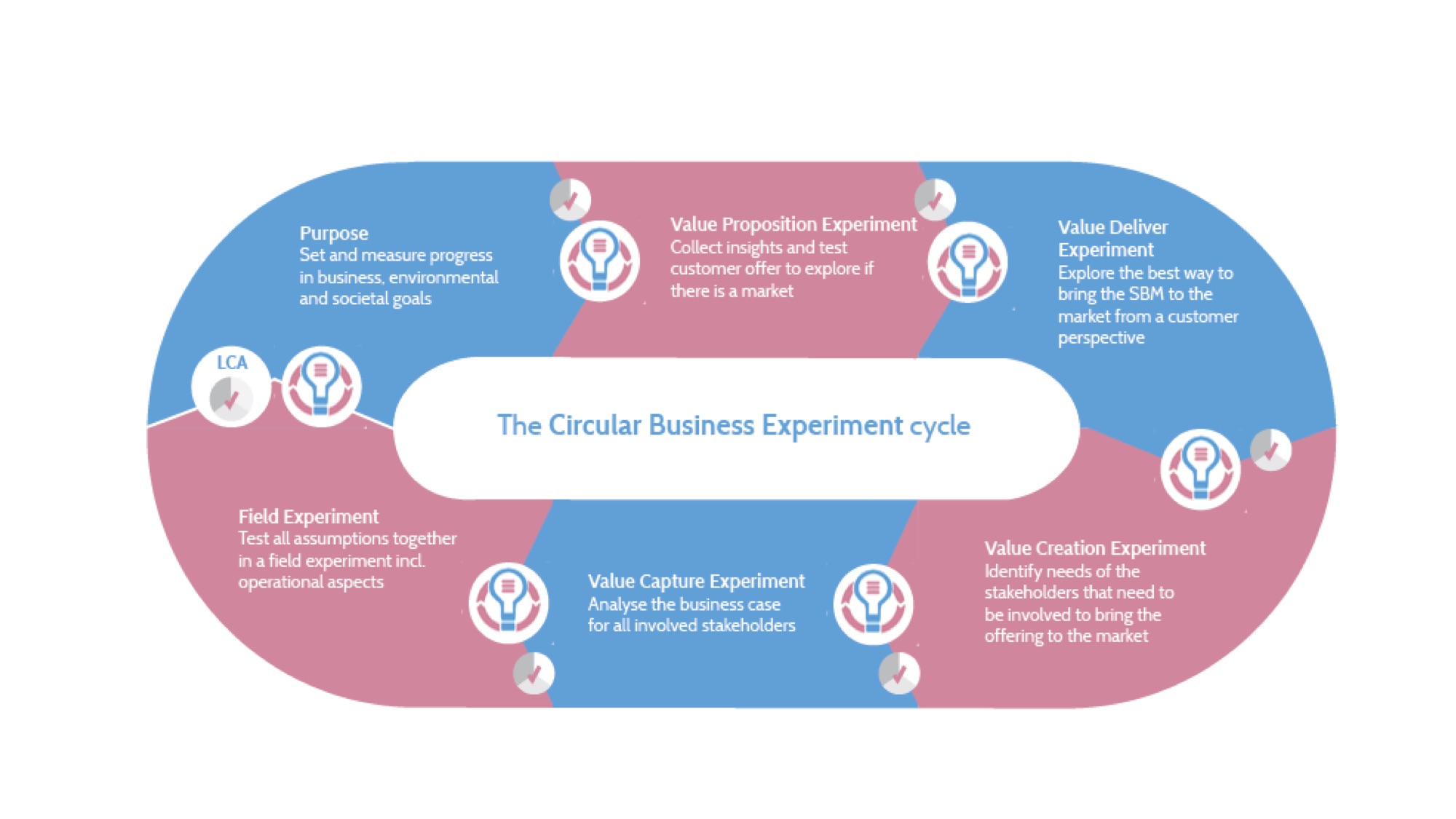From 2016 to 2017, we conducted action research with eight case studies at Delft University of Technology, in collaboration with a societal and environmental purpose-driven innovation consultancy firm, Innoboost, both based in the Netherlands. The objective of this collaborative project, ‘Kickstarting circular business experimentation’, was to help eight case companies transition to profitable circular business models through experimentation.
The case companies varied in terms of size and age and included:
- Fresh-r (decentralised ventilation system with heat recovery);
- Mud Jeans (leasing jeans);
- Bugaboo (strollers);
- Peerby (product sharing platform);
- Evides (drinking water & water services);
- Vereijken Hooijer (stables and nursing homes for pigs);
- Philips (electronic appliances for a healthy lifestyle); and
- Boska (accessories for cheese, also called cheesewares)
In the journal paper, we report on the process of experimentation as well of the role of experimentation in the sustainability transition of the companies:
Process: The case studies showed that there is a certain sequence in steps, but companies tend to go back-and-fourth between steps, for example, going back to the business purpose or redoing a value proposition experiment. Circular business experimentation tends to be an iterative process rather than a linear checklist type of approach.
Role of experimentation: The cases showed that experimentation could serve as a way to create internal and external traction for a sustainability transition. Tracking progress against sustainability goals was found to be an important part of the experimentation process in addition to the need to move from experiments to scaling up.
In the journal paper, we also develop a “Circular Business Experiment Cycle”, which shows a potential sequence of experiments, starting with the business purpose and sustainable value proposition. In contrast to just ‘making money’, the business purpose for a sustainable business includes clear societal and environmental goals. A value proposition experiment then focuses on the customer viability of the product/service offering. Value delivery experiments focus on customer relationships, customer segments and channels. Other stakeholders, such as local community representatives (‘society’) or environmental NGOs (‘environment’) can get involved in these experiments to test whether and how the business can create and capture wider societal and environmental value. Value creation and value capture experiments are about including stakeholders to operationalise the business model, and developing the business case for all stakeholders involved respectively. Finally, a field experiment can test all assumptions together including operational aspects.
The Circular Business Experiment Cycle includes “triple bottom line checks” (i.e., checks for sustainability performance, which can be done using something like the streamlined environmental value proposition approach) in addition to deliberate learning after each experiment. After the field experiment, a more thorough LCA could be performed to assess the full environmental impact.
 Figure. Circular Business Experiment Cycle. Developed in Bocken, Schuit and Kraaijenhagen (2018).
Figure. Circular Business Experiment Cycle. Developed in Bocken, Schuit and Kraaijenhagen (2018).
More information about this work can be found here.
Sources:
- Bocken, N., Schuit, C., Kraaijenhagen, K. 2018. Experimenting with a circular business model: Lessons from eight cases. Environmental innovation and societal transitions (in press). https://doi.org/10.1016/j.eist.2018.02.001
- Manninen, K., Koskela, S., Antikainen, R., Bocken, N., Dahlbo, H. and Aminoff, A., 2018. Do circular economy business models capture intended environmental value propositions?. Journal of Cleaner Production, 171, 413-422.
- Schuit, C.S.C, Kraaijenhagen, C., Bocken, N.M.P. Kickstarting circular business experimentation – From product ownership to customer experience. Innoboost & TU Delft.
